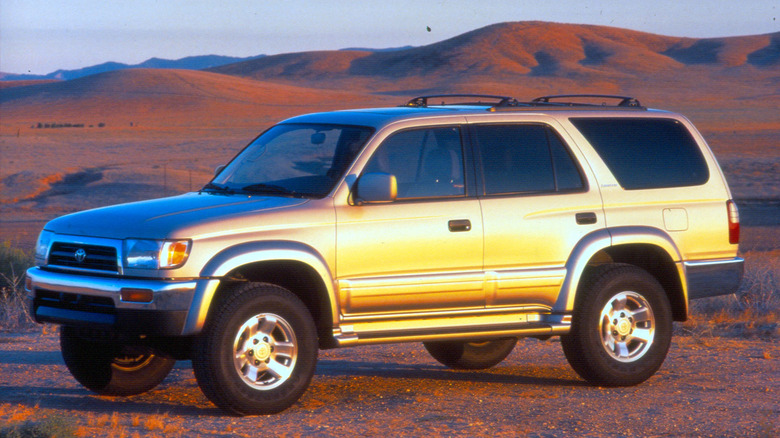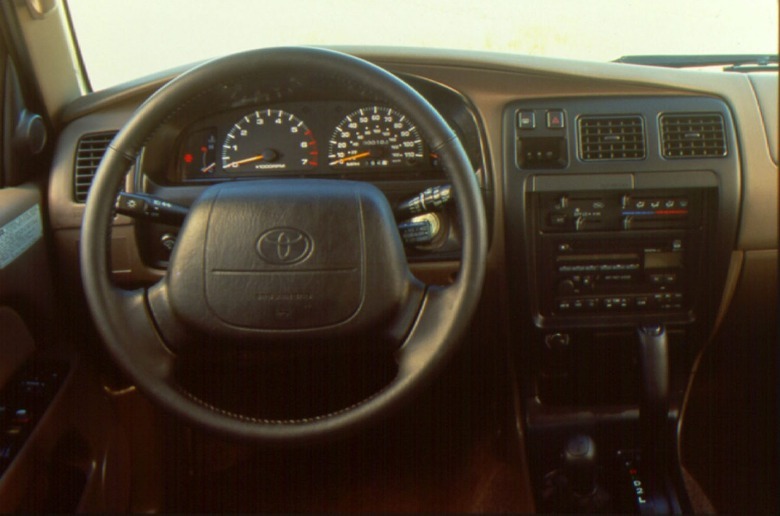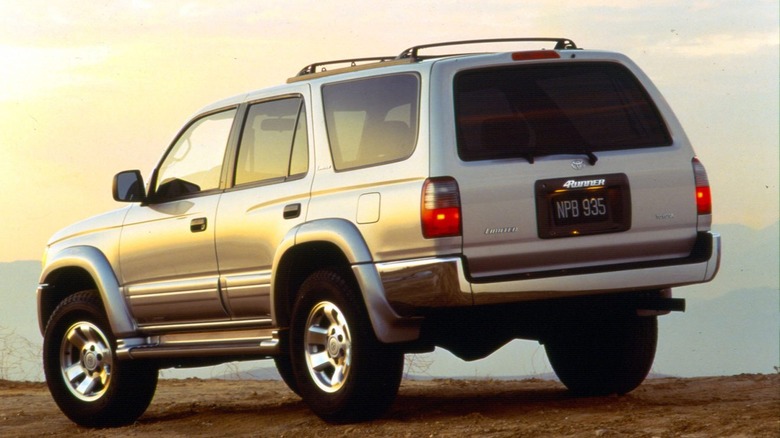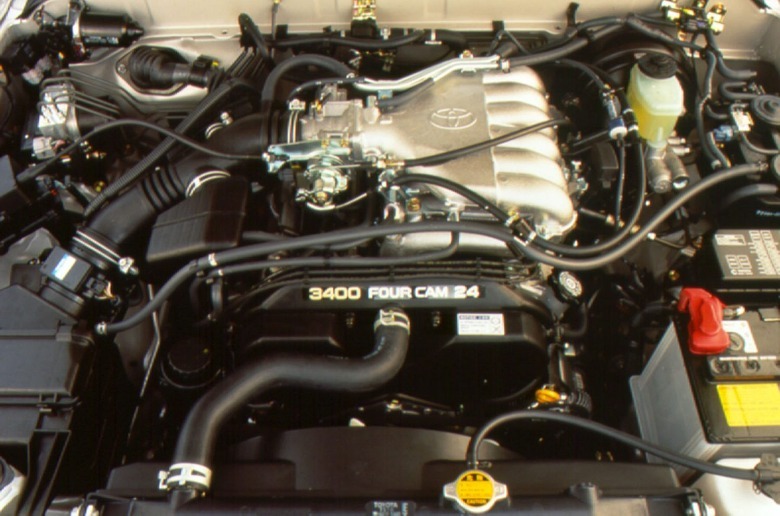Here's What Made The 3rd Generation Toyota 4Runner So Great
The current fifth-gen Toyota 4Runner is getting long in the tooth. It entered the market in 2010 with similar underpinnings to the Land Cruiser Prado and FJ Cruiser. Rumors are ripe of an all-new, sixth-gen 4Runner arriving in 2025, but the most legendary 4Runner remains the third-gen variant unveiled in 1996.
The first Toyota 4Runner appeared in 1983 as a short-bed Hilux with an SUV body. Still, the third-gen model underwent a rethink with its re-engineered Land Cruiser-based chassis, Tacoma-derived powertrains, and bespoke coil-spring suspension that combines rugged capabilities and a decent highway ride. Moreover, the third-gen 4Runner had a two-inch longer wheelbase than its predecessor, freeing up more rear legroom and cargo space.
Manufactured from 1996 to 2002, the N180 Toyota 4Runner was infinitely more capable and refined, and it came with a more potent lineup of gasoline engines. However, the reconfigured chassis, more robust powertrains, and aftermarket compatibility did not make the third-gen Toyota 4Runner the most legendary in its lineage. Instead, it was a combination of factors that made it last longer than its peers.
Toyota 4Runner: Ready for the long haul
The third-gen Toyota 4Runner entered the market with a standard 2.7-liter inline four-cylinder gas engine with 150 horsepower and 177 pound-feet of torque, more than what the outgoing 3.0-liter six had to offer. But the market favorite is the 3.4-liter 5VZ-FE V6 with 183 horsepower and 217 pound-feet of torque. Admittedly, those numbers are nothing compared to today's turbocharged SUVs, but the modest figures and basic construction made it capable of lasting longer than intended.
The Toyota 4Runner has ranked consistently as one of the top SUVs that could last 250,000+ miles, beating stalwarts like the Subaru Outback, Toyota RAV4, and the Honda CR-V. And when equipped with the optional 4x4 drivetrain (2WD as standard) with a center differential or an electronic locking rear diff, the 4Runner could go farther than the typical grassy or dirt road. And while it's not as refined as a sedan, the updated coil spring suspension is easier to live with daily.
Builders love the third-gen 4Runner for its sturdy platform and strong aftermarket support. This is part of the reason why the 4Runner is a common sight outdoors, whether for overlanding, rock crawling, or speeding through the desert. In addition, pre-2000 Toyota 4Runners had an available five-speed manual gearbox, a massive plus if you like rowing gears. You could get a decent third-gen 4Runner from $6,700 to about $15,000, but some examples could sell for as much as $43,000.



